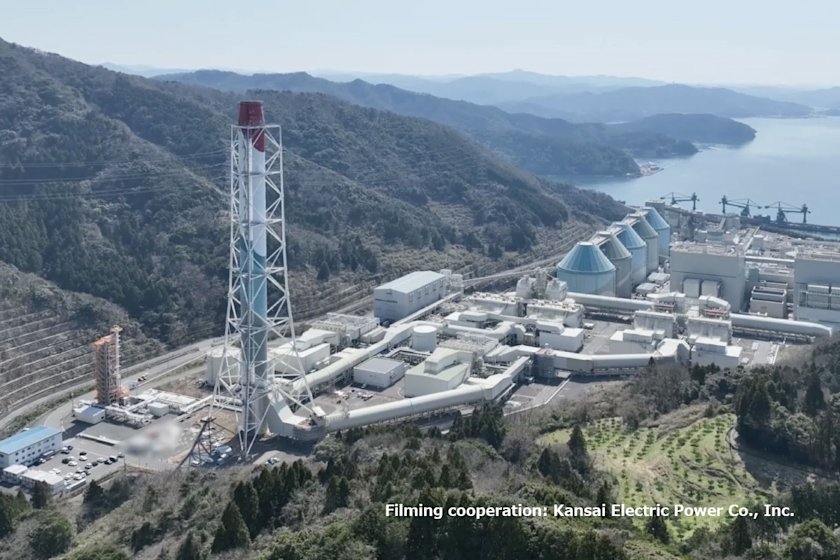Kawasaki Motorcycle's "Other Face": Motorized Tricycles – Primary Players in the Hub-and-Spoke System

All over the world, Kawasaki’s motorcycles are synonymous with high-quality, high-performing sports bikes. In the Philippines, however, the bikes have a significantly different “face.” Locally manufactured and marketed, they are more practical passenger carriers than leisure machines offering a pleasant riding experience. In this issue, the editorial team of SCOPE reports on the manufacturing and marketing efforts at Kawasaki Motors (Phils.) Corporation (KMPC).
The Industry Standard of Motorcycles for Tricycles
Although Kawasaki motorcycles are generally known as high-quality, high-performance sports bikes characterized by lime green bodies, some are used quite differently in the Philippines - as day-to-day transportation. The Barako II and other motorcycles, which are manufactured and marketed locally, have an overwhelmingly large market share in the country as the motorized element of tricycles.
Since 2012, the Philippines has achieved an annual GDP growth rate of 6-7%, with GDP per capita reaching US $3,104 in 2018. It is said that when GDP per capita surpasses US $3,000, sales of durable consumer goods, such as furniture and motorcycles, increase rapidly.In fact, according to the Motorcycle Development Program Participants Association, Inc. (MDPPA), an association of the country’s major motorcycle manufacturers, motorcycle sales (including imports) have increased from 700,000 units in 2012 to 1,590,000 units in 2018, and are still growing.
However, not many people in the country can afford motorcycles for individual commuting. Statistics show that the monthly income of 71% of the Philippines’ 100 million people is under 15,000 pesos (one peso equals about two Japanese yen/two US cents). The middle class, which makes up 20% of the population and earns 15,000 to 50,000 pesos per capita annually, is becoming the main consumer of motorcycles, but tricycles and jeepneys are still an everyday means of transportation for many. Together, these vehicles have created a hub-and-spoke type of network*1.
Originally made from abandoned U.S. military jeeps and altered to elongate the body, jeepneys are passenger buses operating in urban areas and designed to carry about 20 people, and tricycles are the most popular and inexpensive means for reaching jeepney stations or other bus stops, serving as the “spokes” of the hub-and-spoke network.
*1 A transportation network resembling a wheel, in which passengers travel on routes (“spokes”) connecting smaller stations to one large central hub, and then on to other destinations.
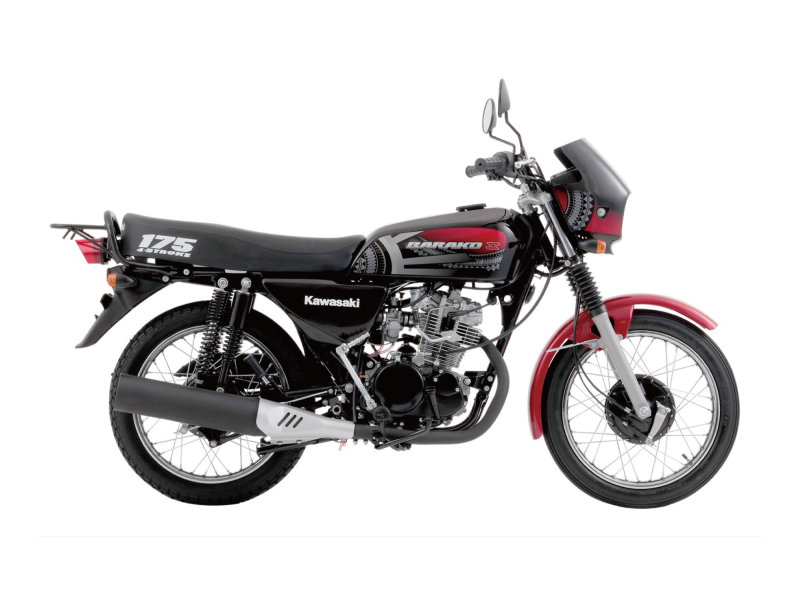
Currently, 2.5 to 3 million tricycles, composed of a sidecar attached to a motorcycle, are said to be in operation in the Philippines. Industry statistics for the third quarter of 2019 indicated that the market share of the Barako II and other KMPC motorcycles used for tricycles exceeded 50% and that the company was the sole bike manufacturer which achieved a year-on-year increase.
Retituto Bautista, who has been producing sidecars in Manila for 30 years, says, “Each region has its own designated type of sidecar, but in any case, sidecar manufacturers are designing their products on the premise that each will be attached to a Barako. The Barako can be considered the industry standard in tricycle configuration.”
How has the Barako won such great user confidence in its application to tricycles? Contributing factors include KMPC’s design efforts to accommodate traffic and economic situations in the Philippines, and its local-community-inspired manufacturing and marketing activities.
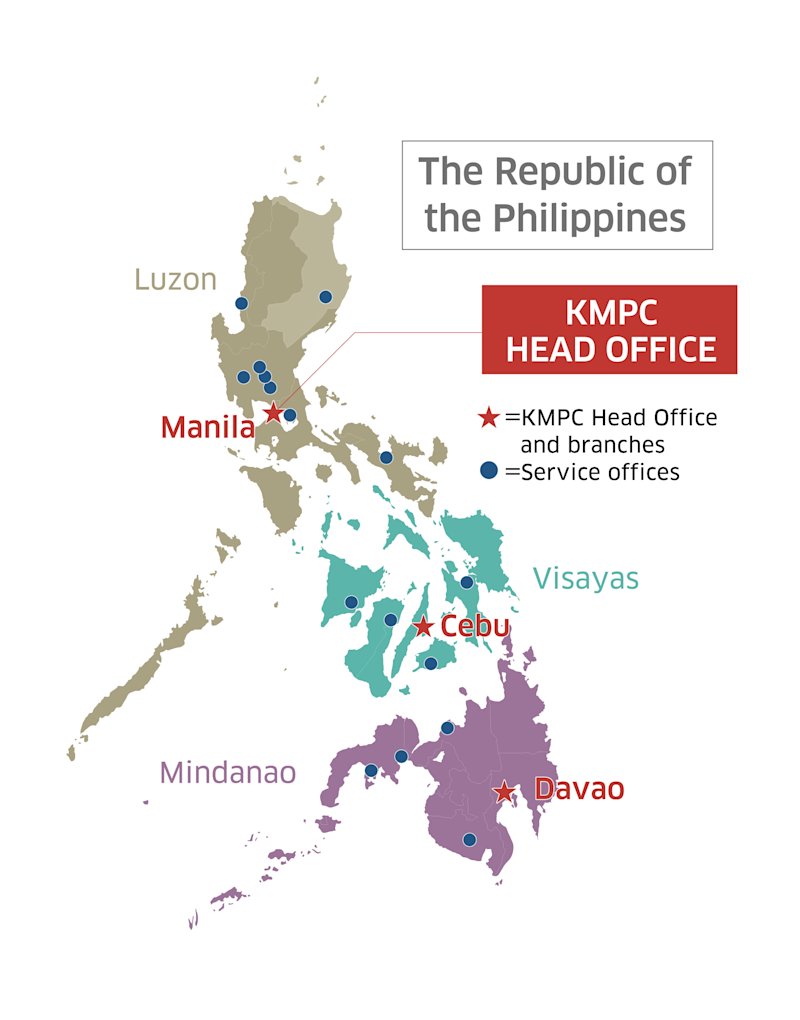
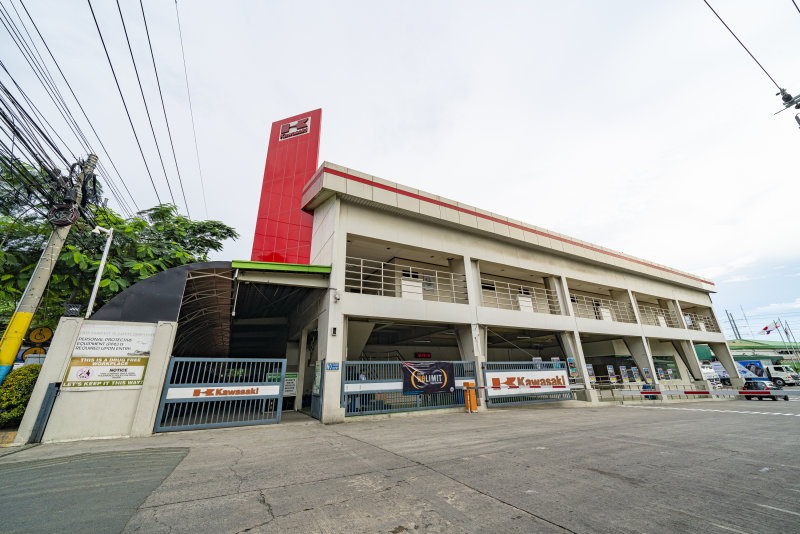
“Barako Is Matibay (Durable) !”
Tricycles operate within a designated district of a few kilometers, and they basically do not operate outside that area. The starting fare is 7 pesos, and even for the longest distance traveled within the district, the cost is a maximum of 30.
Drivers who do not own their own tricycles rent them from owners called “operators” for 150 pesos per day (a rental fee called a “boundary”). Each driver makes about 1,500 to 2,000 pesos per day at most, from which they pay for the boundary and gasoline. Despite the small income, they continue driving the tricycles because, in a country with a stark income divide, it is one of the easiest jobs to get.
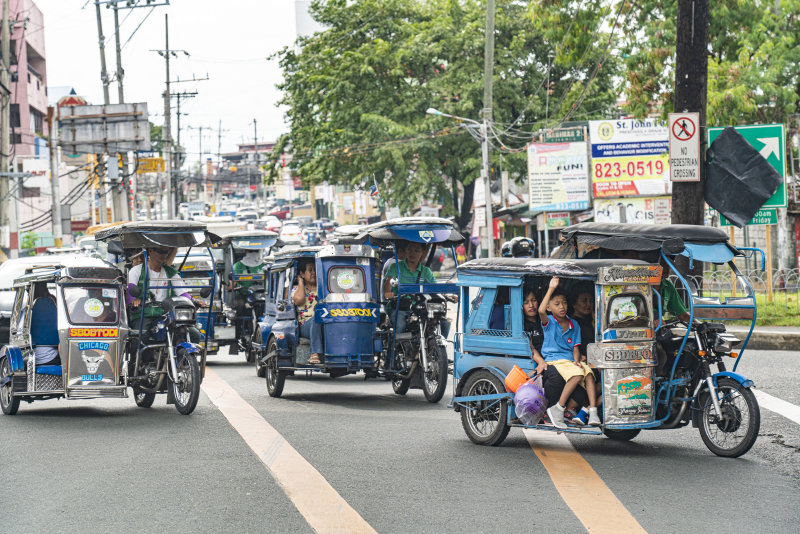
Each operating district has a branch of the Tricycle Operators & Drivers Association (TODA), which offers services associated with tricycle business licenses.
Alvin Niebres, the head of the association’s Makati branch in Manila, with which 1,200 operators and drivers are registered, comments, “For people who are poor, operating a tricycle is a door to realizing their dreams, just as it was for me in the past. If we work earnestly and save money, we can buy a tricycle and become free of boundary payments. We can then purchase two, three, or more tricycles to increase our rental income and be wealthy operators.” He adds, “Now, everybody wants to own the Barako II. Some have 10 of them and are running a very successful business.”
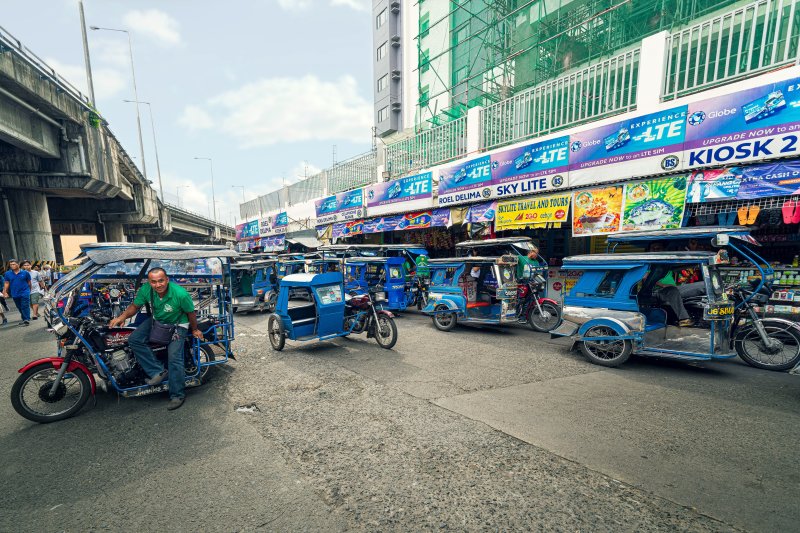
The Barako II, powered by a 175 cc, four-stroke single overhead camshaft (SOHC) engine, was launched in 2013. Compared to the first model released in 2004, its engine output power has increased by 15% and its fuel efficiency by 13%, achieving 57 km/L.
Christina Doval-Santos, Vice President of the Sales, Marketing, and Customer Support Division of KMPC, comments, “The reason why everybody loves the Barako II is because it’s powerful, tough, and high-quality, as well as providing a sense of security as a Kawasaki-branded product.” In fact, asked what they think about the Barako II they use, the first thing most drivers mention is that it is “matibay” (durable).
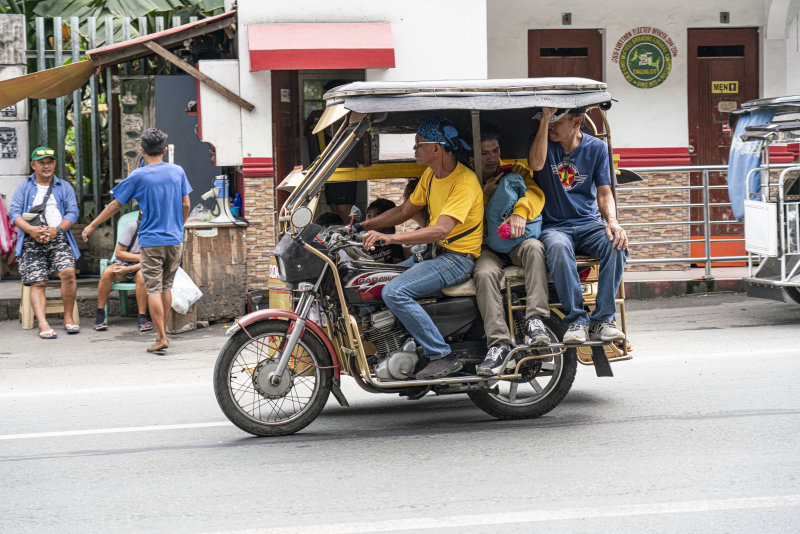
The fruit of KMPC’s Consistent Educational Efforts through TODA
Tricycle passengers sit not only in the sidecar but also on the back seat of the motorcycle. The vehicle carries up to 5 or 6 people, some hanging onto the bars of the sidecar, and travels roads which often are not in very good condition.
VP Doval-Santos explains, “The Barako is a vehicle that loyally supports its drivers under challenging conditions. There are no comparable products with this much power and durability, and even if it’s costly, they are willing to pay around 80,000 pesos for it because they know they will get their money’s worth.”
Another reason for its popularity and user confidence, aside from the quality of the product, is the driver support offered by KMPC through TODA, which can be described as “educational and advisory services.” KMPC staff visit TODA’s branches, not only providing product information, but also teaching trouble-shooting know-how and safe driving tips.
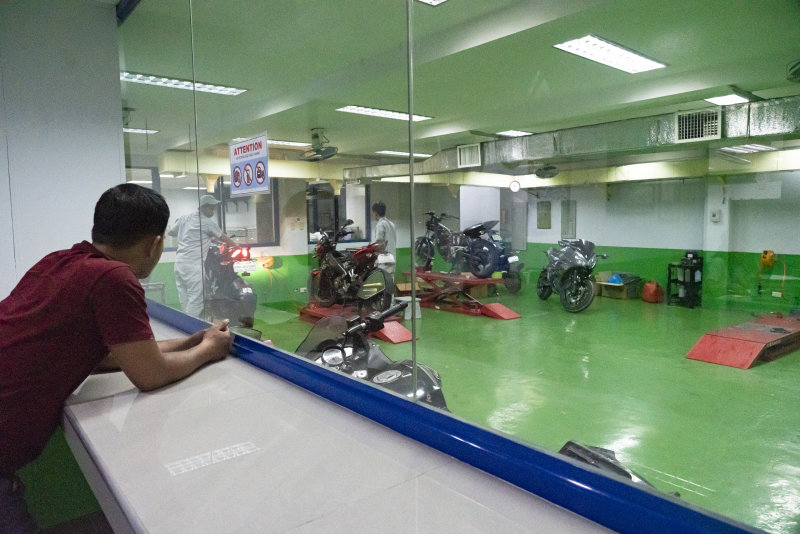
In the Philippines, motorcycle dealers have strong influence over their customers, because they issue loans and make other important arrangements. That is why KMPC assigns one dedicated staff member to each of 2,500 affiliated dealer offices to support the running of the dealer office and its marketing activities, and to provide technical information. VP Doval-Santos explains, “Helping dealers’ businesses to be sustainable makes the tricycle drivers’ businesses sustainable.”
Rachel Timoteo, manager of the Dona Soledad Avenue shop of Motortrade Nationwide Corporation (MNC), the largest motorcycle dealer in the country, comments, “We sell about 50 to 60 motorcycles in a month, but the Barako accounts for 20% of the sales. Most customers ask specifically for the Barako, indicating that they are making the choice not only based on its great power output and quality, but also on KMPC’s consistent marketing efforts which have fostered affinity and trust in the Kawasaki brand.”
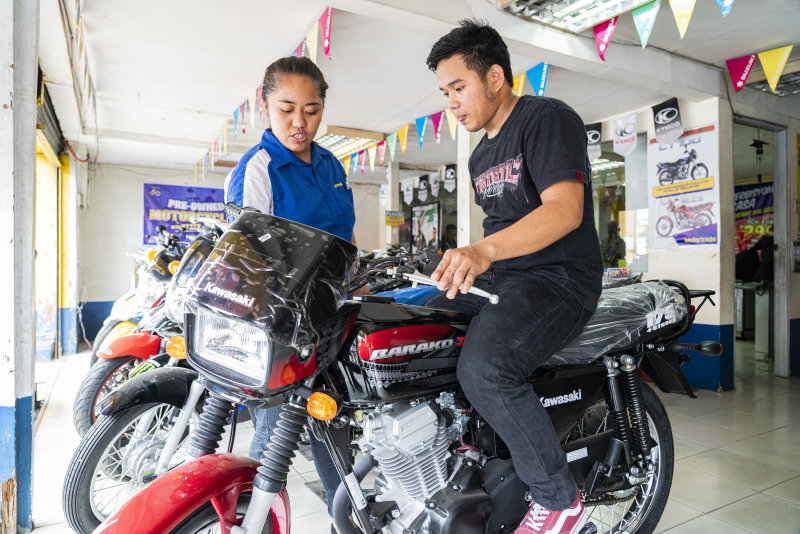
Manufactured with Cutting-edge Technology that Meets Local Needs
The first model of the Barako was developed by the Research & Development Division of Kawasaki’s Motorcycle & Engine Company located in Akashi City, Hyogo Prefecture, Japan. However, development of the second, more sophisticated model, the Barako II, was entrusted to the R&D Department of Kawasaki Motors Enterprise (Thailand) Co., Ltd., a manufacturing and sales company of Kawasaki, because it was located closer to the Filipino market.
In developing the new model, staff in the R&D Department identified local needs through KMPC, in order to figure out the ideal motorcycle for their market. For example, KMPC improved the four-stroke engine, which was used in the first model in order to meet emissions regulations, to a version that achieves higher traction performance at low and medium speeds and better fuel efficiency. This resulted in a motorcycle that contributes to improved profitability for tricycle drivers.
As another enhancement to accommodate the transportation of large loads over rough terrain, the Barako II adopted dual suspension for the rear wheels – two shock absorbers on each side. (In Manila, water suppliers use cargo-carriers installed at the back of the Barako to transport heavy water tanks, as Manila is suffering from a serious water shortage.)
The motorcycle is also equipped with the Kawasaki Automatic Compression Release (KACR) system which enables easy kickstarts. At tricycle terminals, we see motorcycles kickstarting immediately after passengers are seated. They start smoothly – like ink flowing out of a pen nib – and the scene shows how solid the motorcycle’s performance is.
Such high-quality performance is made possible by the Manufacturing Department of KMPC, which is comprised of 620 of the 870 KMPC employees (470 full-timers and 400 fixed-term workers). Propelled by the Philippines’ economic growth, KMPC is enjoying a rapid increase in the production of the Barako and other motorcycles, reaching an annual level of 250,000 units. In terms of production volume, it is the largest of all the plants in the world operated by Kawasaki’s Motorcycle & Engine Company.

Shoji Yamaguchi, Assistant to the President of KMPC, who leads the Manufacturing Department, comments, “Due to the market’s rapid growth, we are implementing full-scale production of 250,000 units per year, compared to only 170,000 units three years ago. To deal with this unprecedented situation, we are working hard towards bringing the capacity of the plant to a higher level, in order to ensure stable production and achieve good efficiency.”
KMPC is therefore fully utilizing the Kawasaki Production System (KPS), which aims to thoroughly minimize waste in the production process by implementing various measures, including the 5S's (sorting, straightening or setting in order, shining, standardizing, and sustaining), and eliminating factors behind production line failures. In addition, KMPC has been sending about 20 employees each year to Kawasaki’s Akashi Works to deepen their understanding of Kawasaki’s manufacturing philosophy.

Full-time workers are normally promoted to line leaders first, then to leadmen, and then to supervisors. Yamaguchi adds, “Thanks to the training, we are seeing employees growing into excellent supervisors and they are now running our plant. We plan to improve the skills of leadmen and line leaders further, so as to foster self-motivated, autonomy-oriented kaizen (continuous improvement) consciousness in them.”
Although the KMPC plant manufactures engines and fuel tanks in-house, it is primarily a knock-down kit assembly plant, so keeping inventory low has been a challenge. On the other hand, the plant also needs to respond flexibly to sudden changes in product trends.
To reconcile these two conflicting inventory requirements, KMPC has been effectively implementing a “Global Manufacturing Bill of Materials (M-BOM)*2” management system, which the Motorcycle & Engine Company established to link its plants in Akashi, the Philippines, Indonesia, and Thailand. Yamaguchi comments, “Thanks to the M-BOM, we have been able to achieve the current level of mass-production and keep high-quality Barakos on the market.”
Kawasaki’s product development philosophy revolves around the concept of RIDEOLOGY (ride + ideology), a term we coined to express our persistence (IDEOLOGY) in achieving an excellent RIDE. One of the principles that constitutes this philosophy is that our bikes should possess both power and gentleness. True to this principle, KMPC aims to achieve both “power” and “gentleness” to support the lives of Filipinos with motorcycles focused on transportation rather than on sports use.
*2 An M-BOM is a document detailing all the components and procedures required to produce, assemble, and package a finished product.
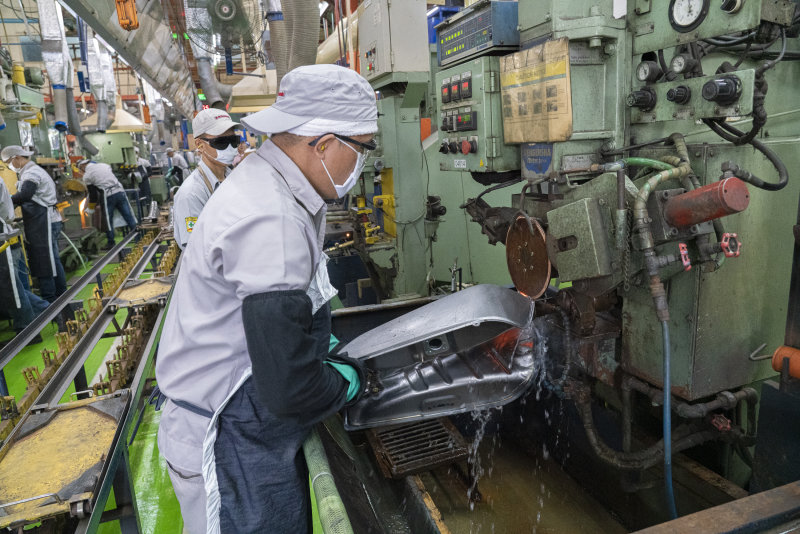
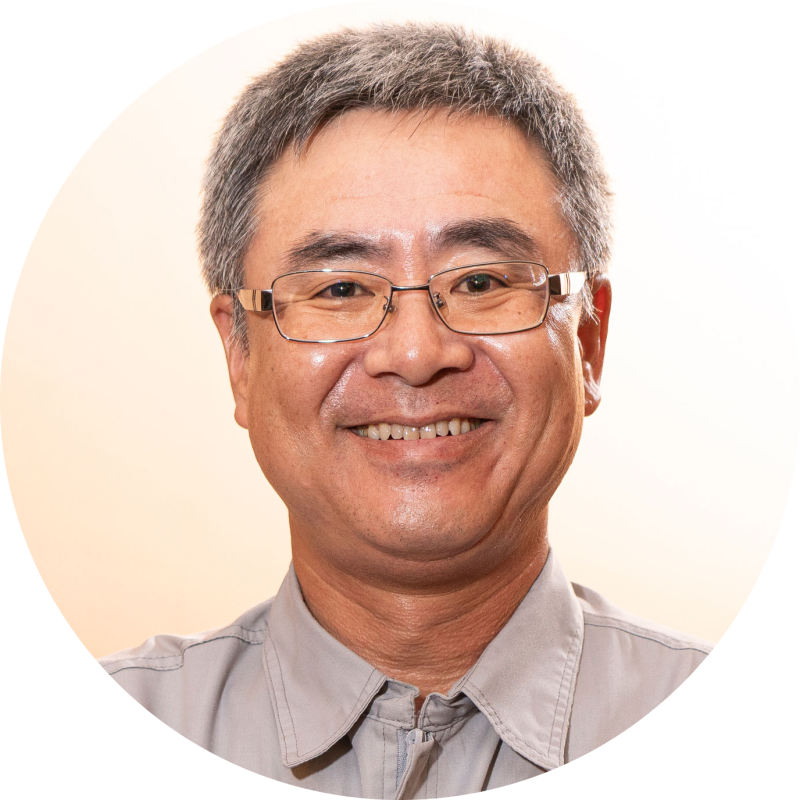
Kawasaki Motors(Phils.) Corporation(KMPC)
nadequate Infrastructure Won’t Stop Us from Delivering Products that Meet Expectations
In 2018, KMPC celebrated the 50th anniversary of its founding. It was originally a joint venture between a local company and a Japanese entrepreneur who had a desire to provide transportation for the people of the Philippines. Later, the company expanded into manufacturing, and in 1996 became a subsidiary of Kawasaki, with Kawasaki acquiring more than 50% of its shares.
I feel that the journey KMPC took clearly represents our business mission - that we must thoroughly understand the condition of local roads, which are not the best, and how motorcycles can be utilized there, in order to develop and produce machines that truly support the lives of Filipinos.
The Barako motorcycle epitomizes this mission, in the sense that they receive outstanding support from the drivers of tricycles - indispensable, everyday means of transportation. Because of its large engine displacement, the Barako is more expensive than our competitors' products, but it is durable and rarely fails, which means that buyers will definitely get their money’s worth, and Filipinos favor reliable products over new ones. For tricycle drivers, the reason is obvious, because the machine’s reliability directly affects their income. KMPC is committed to the local production and delivery of motorcycles which meet their needs, while leveraging design technology provided by Kawasaki in Japan.
Propelled by rapid economic growth, the sale of motorcycles in the Philippines is growing significantly. To capitalize on this upward trend, we have been trying to establish a system unique to KMPC to strategically manage both manufacturing and sales.
In terms of manufacturing, we are making efforts to better incorporate the concept of the Kawasaki Production System (KPS) into our production system to improve outcomes. Focused on the complete elimination of muda (waste), muri (excessive effort), and mura (inconsistent results), our approach has fostered self-motivated employees who try autonomously to identify the factors underlying problems and come up with effective solutions. As a result, the “Kaizen Presentation” held annually in November has become an event infused with enthusiasm.
In terms of sales activities, VP Doval-Santos and her staff are implementing various localized measures that serve the situation in the Philippines. These include support for dealers and assistance to drivers through TODA. KMPC is focused on developing win-win relationships with them, and such relationships are certainly being built. I am proud of the outcome.

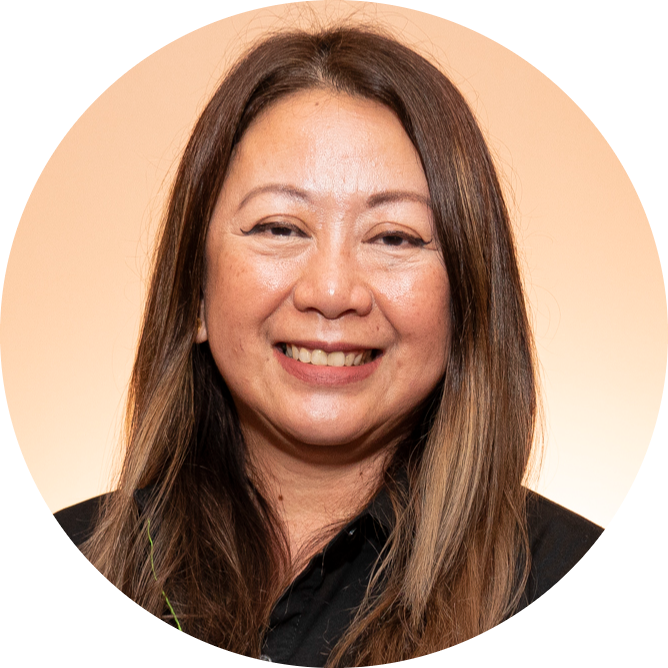
Sales, Marketing, Customer Support Division
Kawasaki Motors (Phils.) Corporation(KMPC)
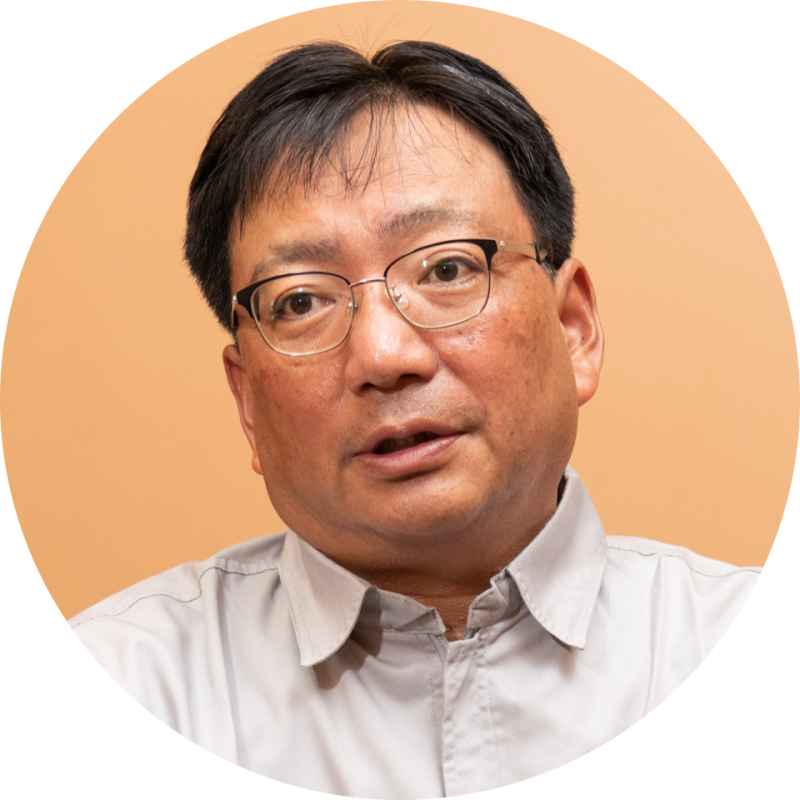
Kawasaki Motors (Phils.) Corporation(KMPC)
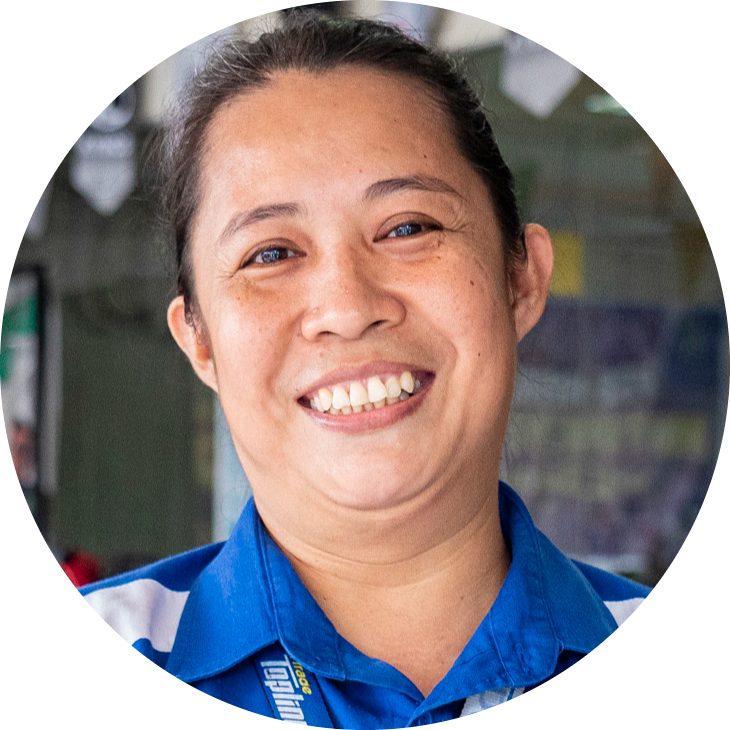
Motortrade Nationwide Corporation (MNC)





